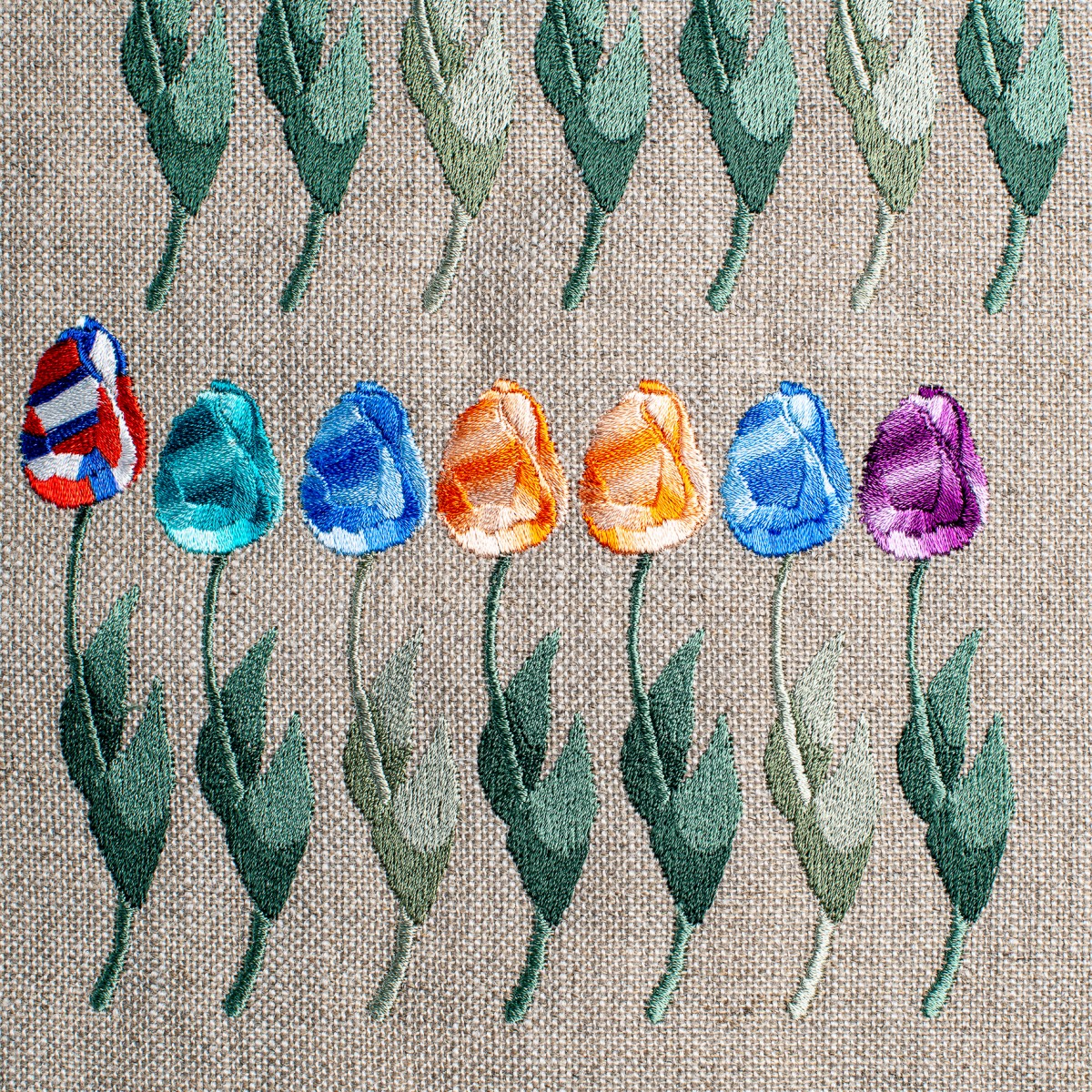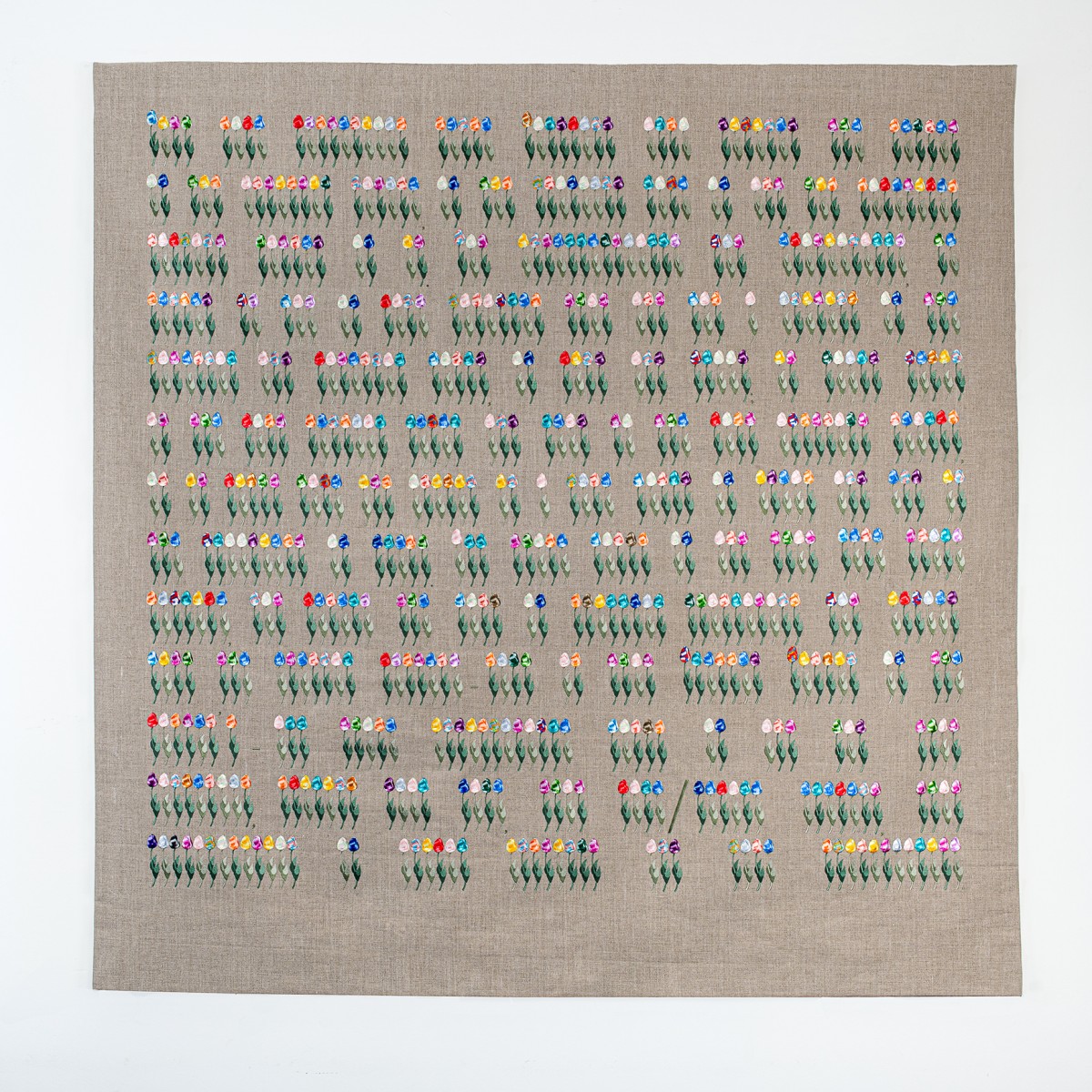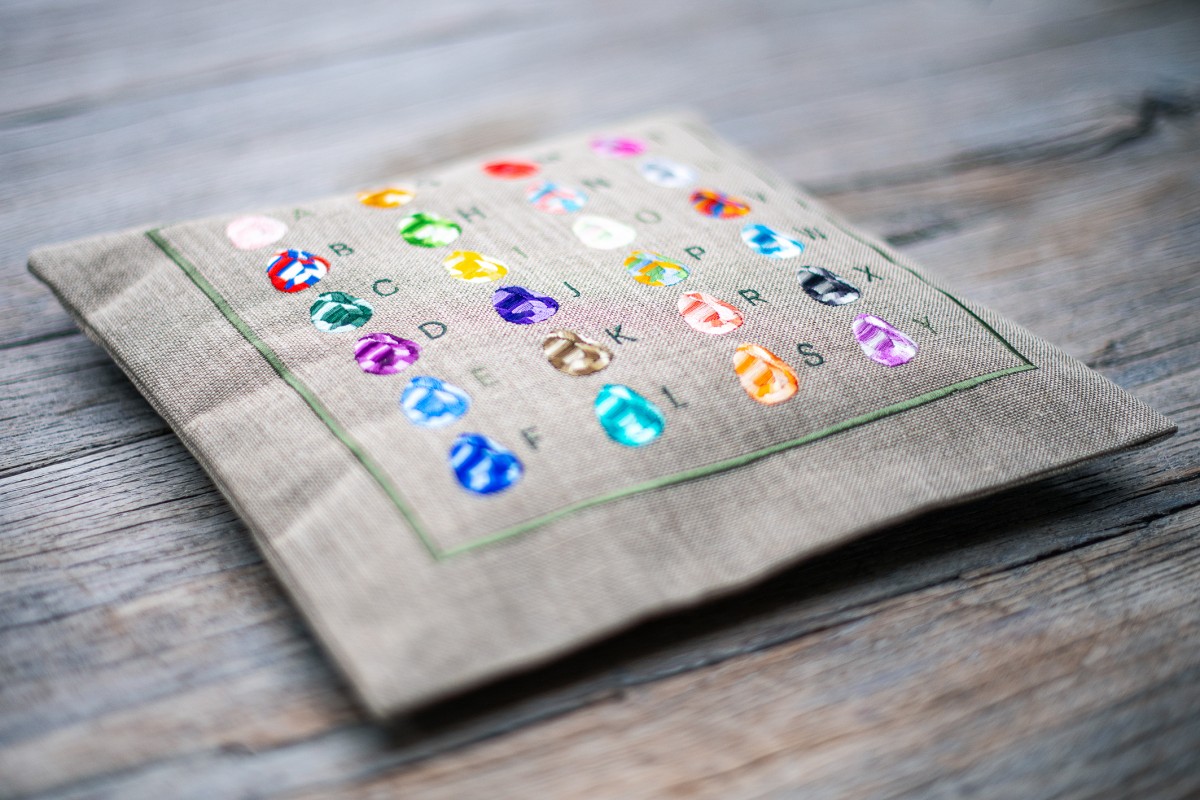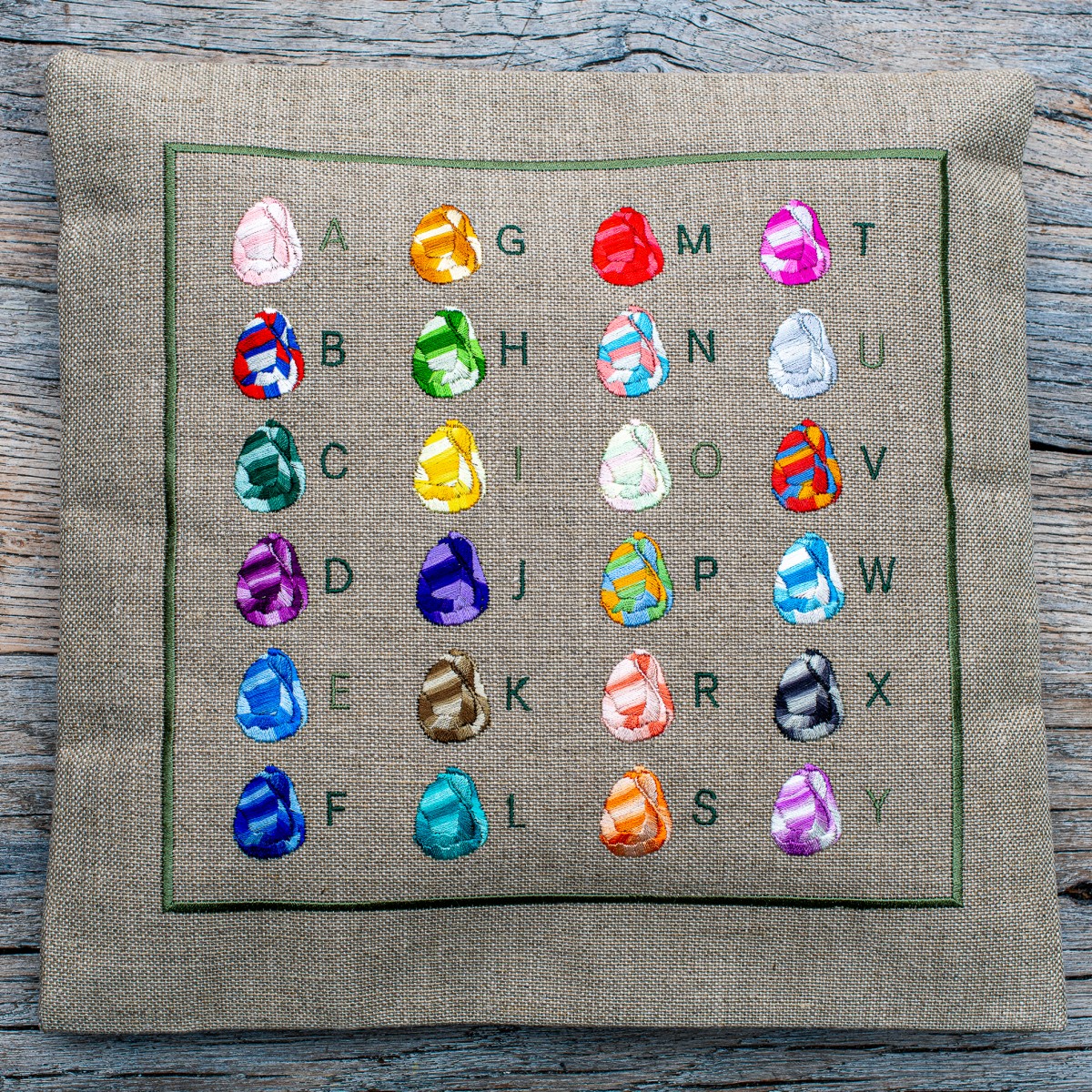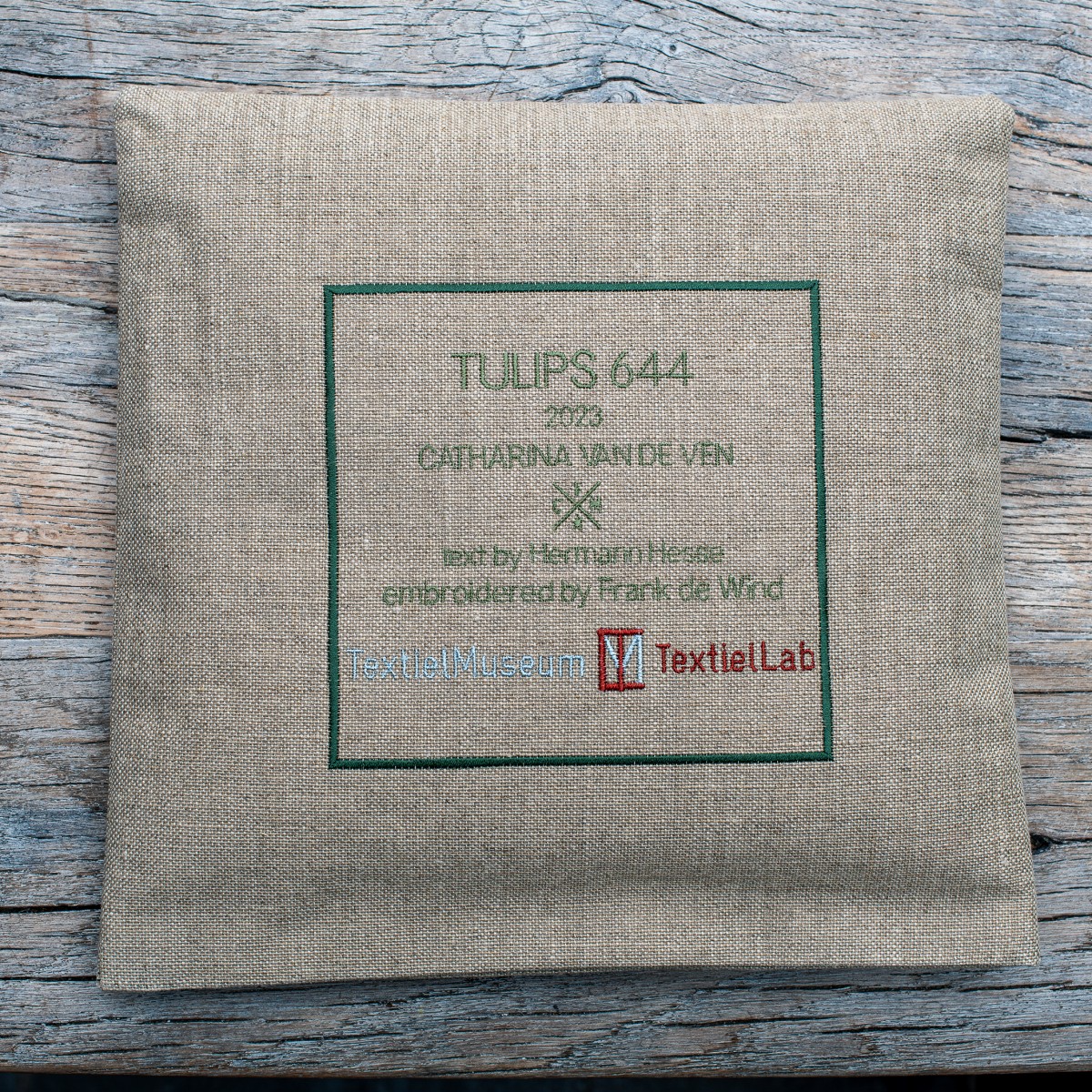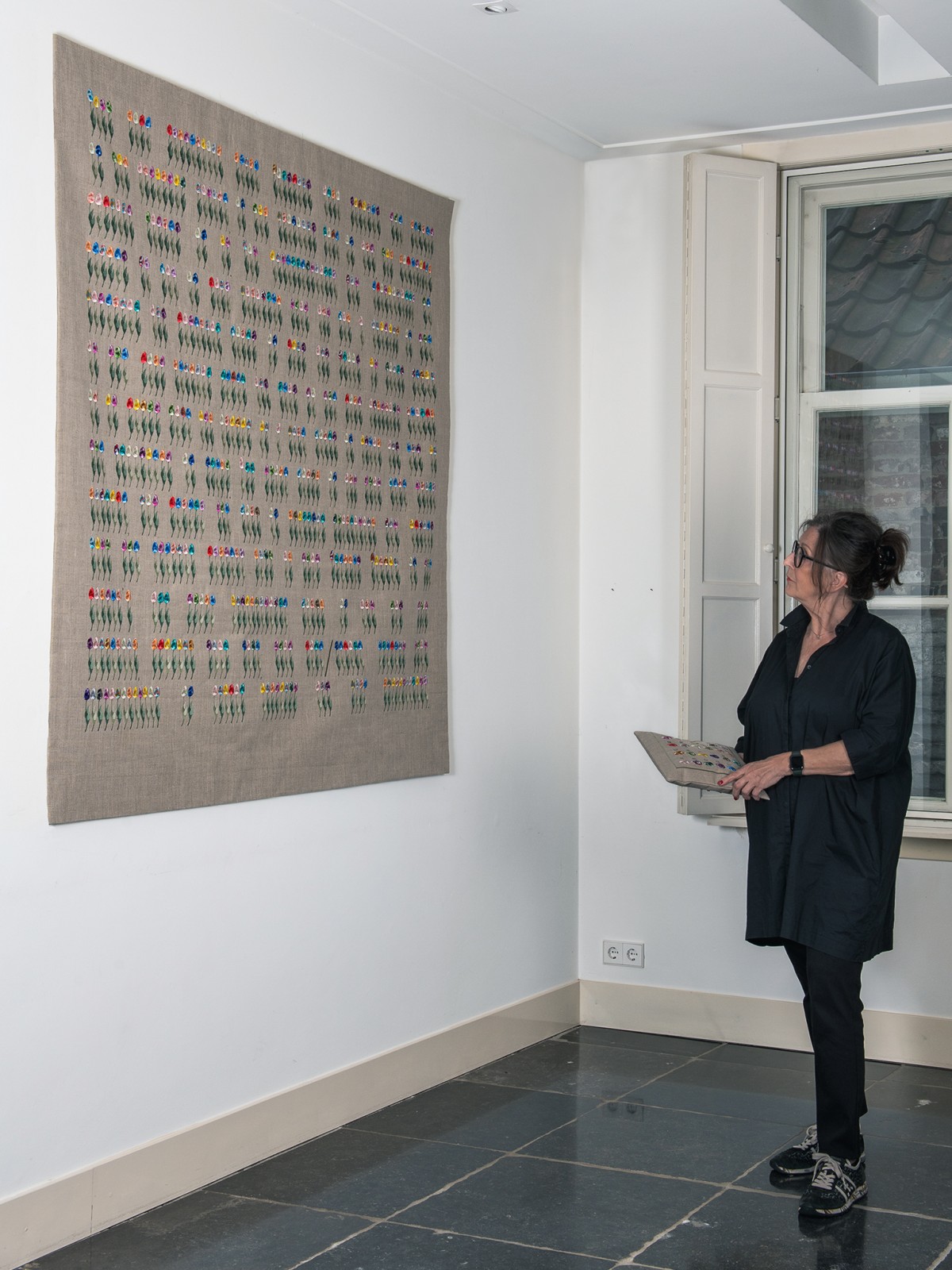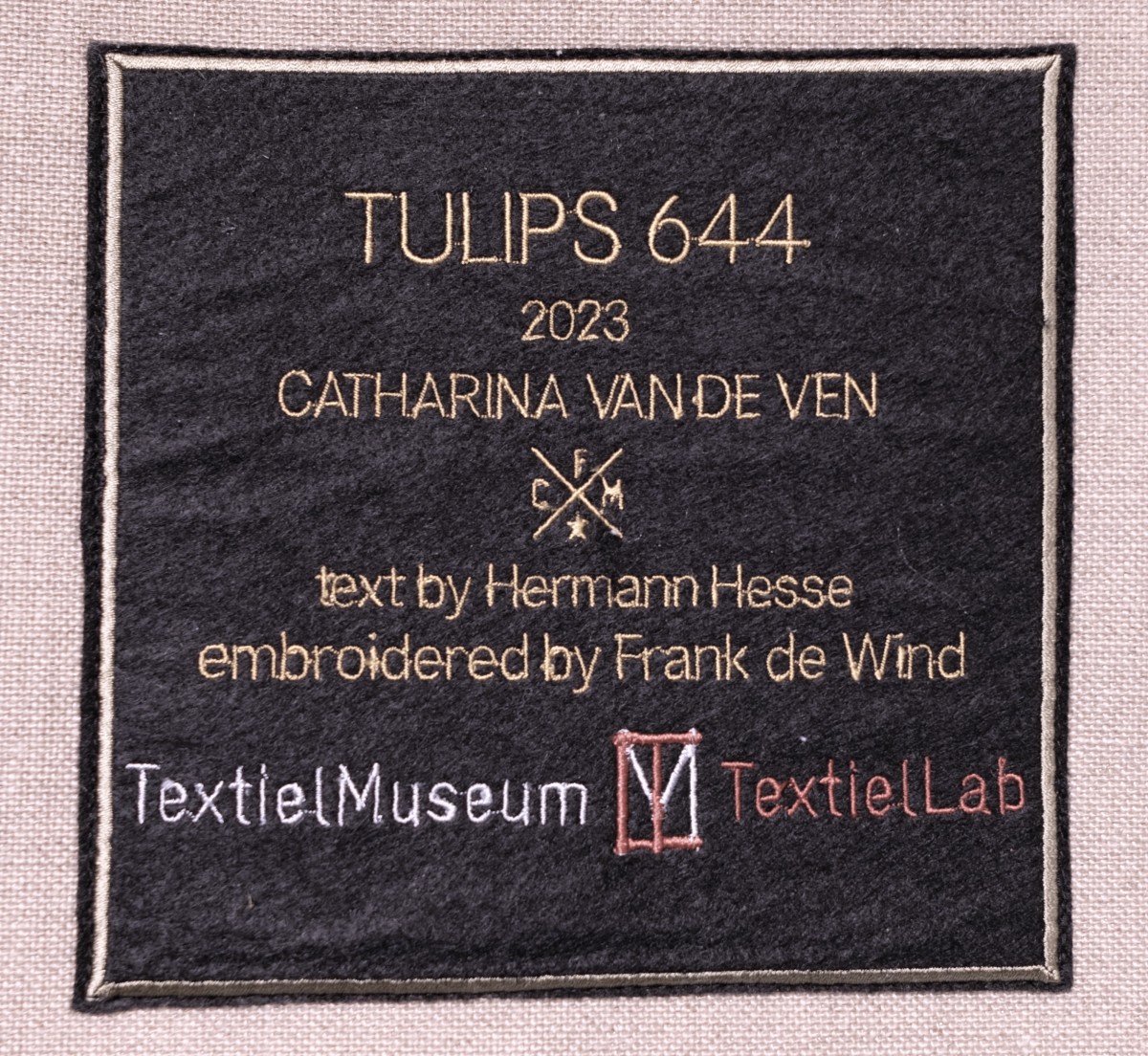Tulips 644
Embroidered wall tapestry - this project is developed in cooperation with TextielMuseum Tilburg. Executed at TextielLab by embroidery expert Frank de Wind.
170 x 170 cm - linen canvas - embroidery yarns
A text from Hermann Hesse is translated into 644 embroidered tulips.
From Narcissus and Goldmund:
"With some mysterious sense Goldmund also divined the secret of his artistic nature, of his profound love of art, his sometimes rampant hatred of it. Not intellectually but emotionally, he sensed by way of many parables that art was a uniting of the paternal and maternal world, of mind and blood; it could begin at the most sensual level and lead to the most abstract realms, or it might have its origin in a pure world of ideas and end in the bloodiest of flesh. All those works of art that were truly sublime, not merely the work of skillful charlatans but imbued with the eternal mystery – such as that Blessed Virgin of the master’s – all those indisputable works of art had that dangerous, smiling dual face, that male/female element, that juxtaposition of animal instinct and pure spirituality."
“Goldmund could have made this work”, commented a colleague artist designer when he looked at one of my sculptures at my first ever exposition. I did not understand his remark but he referred to a book of Herman Hesse titled “Narcissus and Goldmund”. I promptly bought and read the book and it left an inerasable impression in my heart and head.
Years later, as I was working on one of my tapestries at TextielMuseum, their embroidery department struck me with inspiration; I wanted to make an embroidered field with hundreds of colorful tulips that together represent a hidden message. When I further contemplated the concept, I instantly knew what that hidden message would have to be: the most memorable sentences spoken by Goldmund about his vision on his own being as an artist. A vision that so fully resonated with my own view on art that I just had to translate these heartfelt words into tulips; each and every letter with its own color to create a secret writing that can only be read if one knows the hidden code.
While designing and working on the tulip field I tried to learn more about Hermann Hesse, the author of the book. How was it possible for a respected writer to write such a striking statement about the essence of art? To my surprise I learned that Hesse, besides being a writer and a poet, also worked as a painter. Further investigation revealed that after Hesse’s death, the Goethe Institute exhibited his paintings at Arti&Amicitiae in Amsterdam. I am an artist member of Arti&Amicitiae, so I walked in Hesse’s footsteps. Closer to Goldmund than I could have imagined.
- About the author:
Hermann Hesse was born in Germany in 1877. In 1930 he wrote Narciss&Goldmund. His novels, poems and critical essays established him as one of the greatest literary figures of the German-speaking world. He won the Nobel Prize for Literature in 1946. Hesse died in 1962
“I am a poet, a seeker, and a confessor, obligated to truth and sincerity. I have a charge, albeit small and confined: to help other seekers to understand and to cope with the world, if only by assuring them that they are not alone” Herman Hesse 1950

